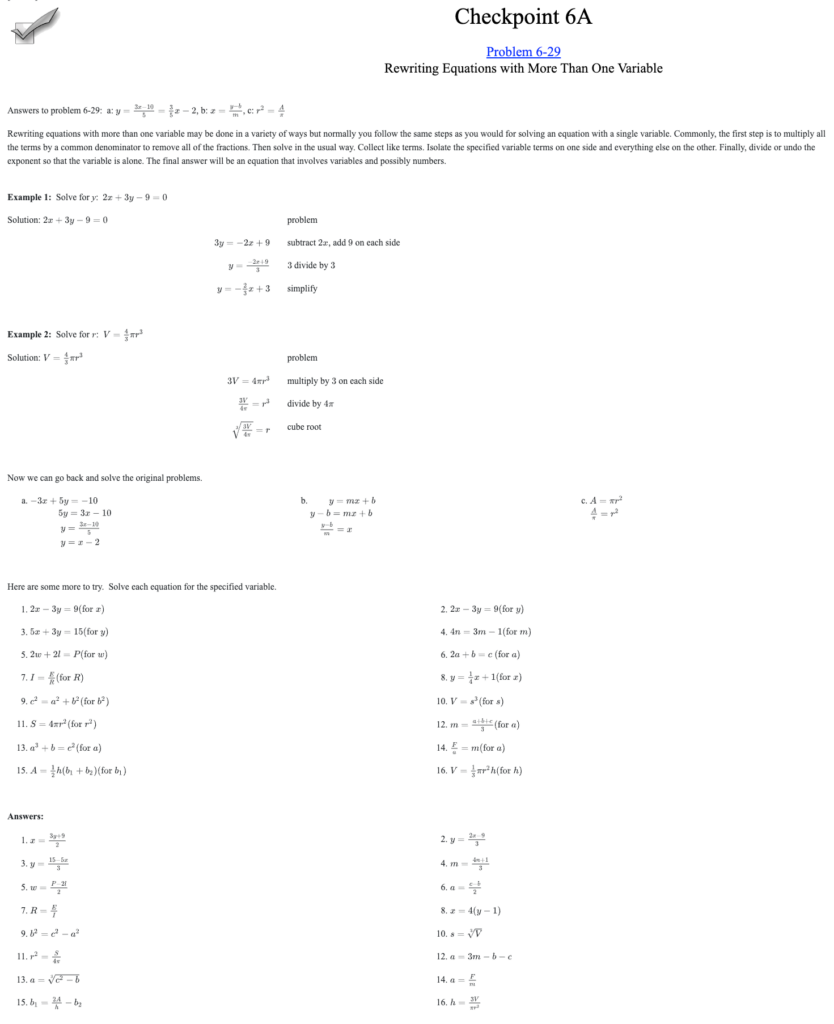Terri Matelski, Parma City Schools, OH
Looking back to my first professional development day, I remember being quite overwhelmed when I heard that I would be using the CPM curriculum with my 6th grade students who have cognitive delays. My mind was immediately filled with “I CAN’T”, because my students’ skills typically fall at least two to three grade levels below their peers. I can recall the whispering among the Special Education Intervention Specialists who shared my opinion that our students would not be able to use this curriculum. We could easily come up with a long list of reasons why it would not work.
When I took my Teacher Edition home and leafed through it, I decided I was going to let go of the “I CAN’T” and replace it with “I CAN”. I decided to raise the expectations in my classroom and challenge my students and myself like we have never been challenged before. This would be especially demanding for me because my students require a modified curriculum, and it was the first time we were focusing on the Common Core using standards other than those in their IEPs. I was going to have to find a way to teach
the “regular education curriculum” to my special education students while also meeting the individualized needs on their IEPs.
I have always believed that learning needs to be fun! It has been my experience that kids who are having fun learn far more than kids who are not. In fact, I believe that when kids are having fun, they often do not even see it as learning. To me, CPM is a curriculum that puts the fun in learning.
It was very important for me to stick to the curriculum so my students were learning the same topics as their peers in a traditional classroom. When planning a lesson, I always started with the Core Problems. I knew those were the most crucial problems; therefore, I focused my learning targets on the Core Problems. Each day, I would write one simplified target on the board. I felt it was essential for every student to be able to verbalize the target during the lesson, so I did my best to keep them to ten words or less. I challenged my students to “hit the bull’s eye” everyday. They rose to the challenge and even surpassed my expectations.
I planned lessons that included whole group instruction (using the Core Problems), and then my assistant and I would break into smaller groups based on the varying abilities of the students in my classroom. Whenever possible, I involved movement, manipulatives, and visuals. I had my students “become” the problem. For instance, when we were creating patterns with dots, they became the dots, and then drew them on the board. We became histograms and bar graphs. Histograms touch, so we stood with our bodies lined up next to one another touching, and bar graphs do not touch so we each took a step away from each other, not touching, with space in between. For instance, when we were learning how to add positive and negative numbers, I introduced the lesson by having the students “play ball”. Every kid loves to play games and could relate to being on a team at one time or another. For each problem, I would pass out enough cards with the words “Positive” or “Negative” written on it to mirror the problem. When adding simple problems such as 3 + 7, I gave ten students a positive card and told them to demonstrate the problem in the front of the room with three students on one side of a giant plus sign and seven students on the other side. They then would demonstrate simple addition by moving to the right of the equal sign become a positive ten. We were also able to demonstrate the same problem using negative numbers with negative cards: –3 + –7 = –10. It was obvious how they could become one collection, or “team” as we called it, as long as each number had the same sign. The real learning and discovery happened when the problem changed to adding a positive and a negative number. For instance, when we looked at the problem 3 + (–7), three students were given positive cards and seven students were given negative cards. I then challenged them to determine an answer, and decide if the answer is positive or negative. I loved watching the discussion between students. It was great for them to be able to explain that if numbers are on
different “teams” with different signs, you have to subtract and keep the sign of the larger number (because that is the bigger team). They were able to use this information, develop methods, and apply them to future problems.
I also used food when I could. My students were able to master decimals, percents, and fractions using a role of Smarties™ or small bag of Skittles™ to calculate the percentage of each color in their package. Hershey™ bars make great manipulatives and rewards for learning how to add, subtract, multiply and divide fractions. Visuals including PowerPoint presentations were also highly effective in teaching my students.
Overall, my students amazed me. It was truly inspiring to see their transformations. They went from learning about time and money to being able to use a calculator to explain how and why to use a specific graph, add and subtract positive and negative numbers, explain how area and perimeter are related, and change improper fractions into mixed numbers using common denominators. They were able to apply their learning to word problems. Weekly scores were on the rise. Great things were happening. Parents were excited! My students were being challenged like never before and were excelling. They enjoyed math and looked forward to it every day. I heard comments like “Math is already over…that went quick” and “Can we keep doing math?” It made me feel good to know how much they loved it.
Since my first professional development day a year ago, I have completely changed my way of thinking. My “I CAN’T” turned into “I CAN” and eventually, “WE DID”. Using CPM my students were challenged more than they ever were before. They achieved more than I could have ever anticipated. I am so very proud of all we accomplished this year. And I know they will continue to succeed using CPM in the coming school years.


